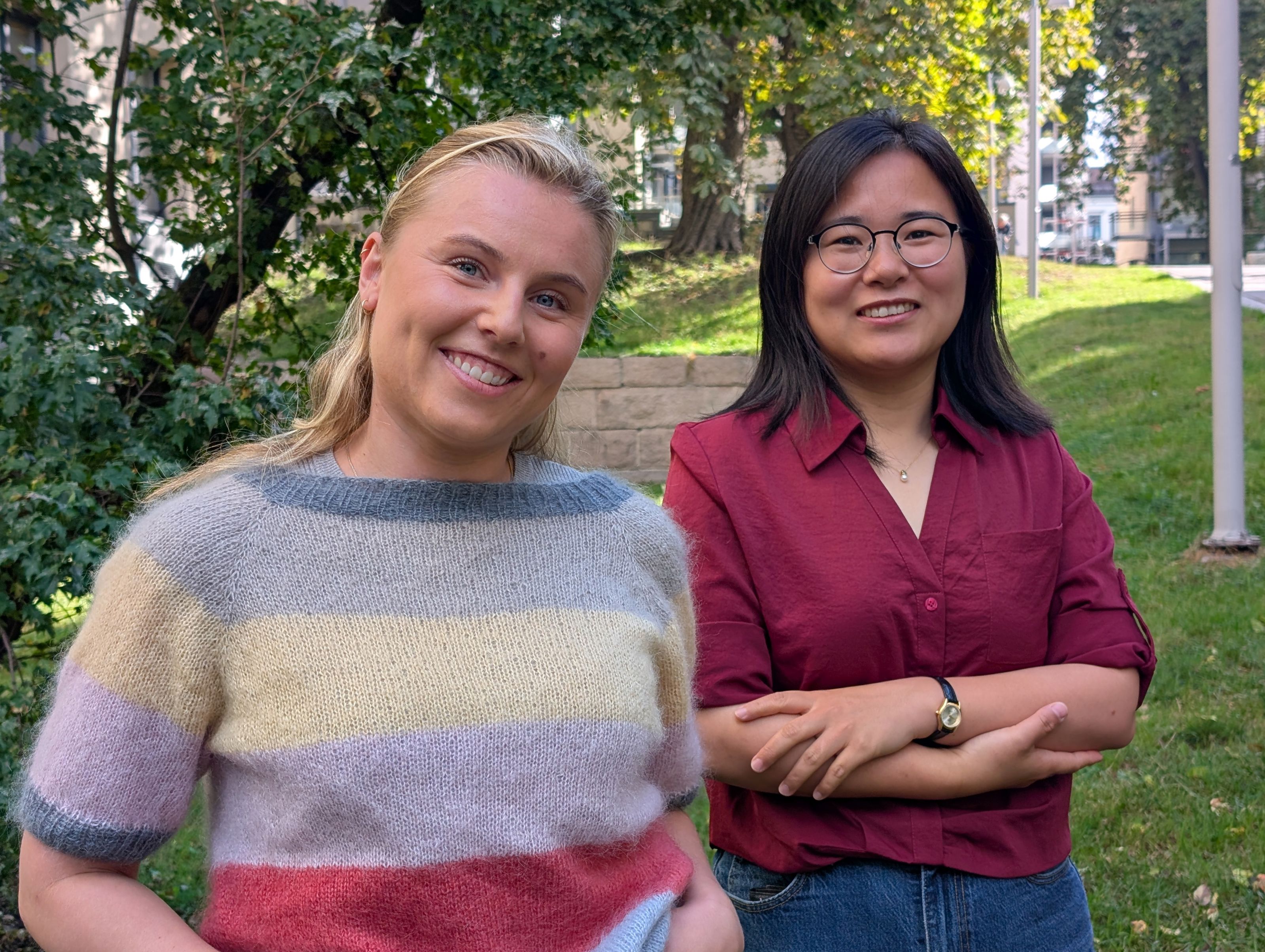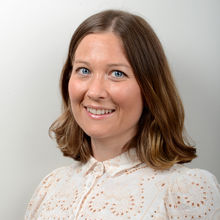More Students Choose Geotechnical Engineering – and the Share of Women Is Soaring
The master’s program in geotechnical engineering at OsloMet is expanding quickly. When the program launched in 2022, it had just five students – all men. This autumn, 21 new students enrolled, eight of them women.

Viktoria Sandboe (left) and Yi Zhang are among a growing number of women choosing geotechnical engineering. They highlight societal value and strong job prospects as key reasons for their choice of study. ( Per Olav Solberg / NGI)
“Almost 40 percent of this year’s new students are women. That’s a major step forward for a field traditionally dominated by men,” says Tone Radcliffe Smaavik, Head of Onshore Foundations at NGI. She has worked closely with OsloMet on launching and developing the program.
Yonas Zewdu Ayele, Head of the Department of Civil and Energy Engineering at OsloMet, confirms the trend:
“This is a striking increase compared to earlier cohorts. I believe the change reflects greater visibility for the field and a broader shift in engineering studies, where more women enter traditionally male-dominated disciplines.”
A Growing Need for Geotechnical Engineers
OsloMet’s initiative is motivated by a simple fact: Norway urgently needs more geotechnical engineers. For years, NTNU has been almost alone in producing graduates—about 30 annually.
“Everyone gets a job, often before finishing their degree. Demand is so high that employers compete for the candidates. That’s why OsloMet established its master’s program in 2022, and NGI has been an active partner from the start,” Smaavik explains.
Ayele links the rising interest directly to society’s needs:
“Employers demand more geotechnical engineers, and students clearly see that expertise in this field is both relevant and socially valuable. Geotechnical engineering is critical to major infrastructure projects, climate adaptation, and sustainable urban development. Many students want to contribute to those challenges. Strong partners like NGI and Connect have also anchored the program academically,” he says.

Tone Radcliffe Smaavik, Head of Onshore Foundations at NGI, has worked closely with OsloMet on launching and developing the master’s program. ( NGI)
NGI Contributes with Teaching and Role Models
The program is taught in English, and NGI supports it with adjunct professors who take students into NGI’s extensive laboratory and out into the field.
“That ensures teaching stays current with new research and real-world examples. Students meet passionate lecturers who show how theory translates into practice. The collaboration also gives NGI unique access to future research talent and a chance to help shape tomorrow’s geotechnical engineers,” says Smaavik.
Viktoria and Yi Chose Geotechnical Engineering
Viktoria Sandboe and Yi Zhang started the OsloMet program this autumn. Both highlight societal value, job prospects, and the balance of theory and practice as key reasons for their choice.
“I first studied molecular biology, but I missed collaboration and wanted a subject that produced concrete, visible results in the world. In geotechnical engineering, you see how calculations become structures and infrastructure that society depends on. That makes the studies meaningful,” Sandboe says.
She also values OsloMet’s teaching style:
“We do a lot of group work, which prepares us well for working life. I think this way of learning is a big reason why so many thrive here.”
Zhang, who has a background in economics and accounting, switched to engineering after several years in the workforce. She wrote her bachelor’s thesis with NGI, and that’s when her interest grew strong.
“Half a year in the lab fascinated me. Geotechnical engineering deals with foundations that everything else is built on. For me, it feels meaningful to help ensure structures stand safe and secure,” she explains.
Environment and Climate Drive Interest
Zhang points to environmental geotechnics as a growing field that attracts more women:
“When we reuse masses in road and tunnel construction instead of dumping them, we protect the environment and cut costs. Norway will need these solutions going forward. I believe this sustainability perspective makes the field especially appealing to women.”
Sandboe agrees:
“In one lecture, we were asked what motivates us most in geotechnical engineering. The options were climate/environment, financial outlook, or the social environment. I noticed that many of the women chose climate and environment. That shows how sustainability influences career choices,” she reflects.
Both Zhang and Sandboe also emphasize job opportunities after graduation as a strong motivation.
“After many years of studying, it’s reassuring to know that geotechnical engineers are in such demand. You study with confidence that you’ll land a job society really needs,” says Sandboe.
“Geotechnical engineering opens many doors – whether in fieldwork, calculations, laboratory research, or environmental projects,” Zhang concludes.
